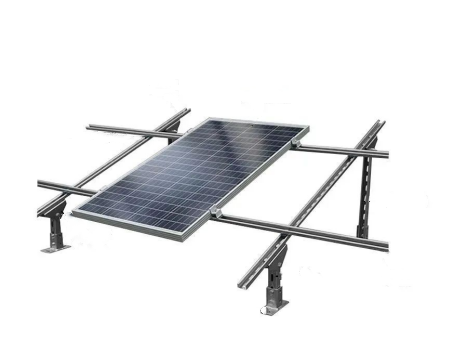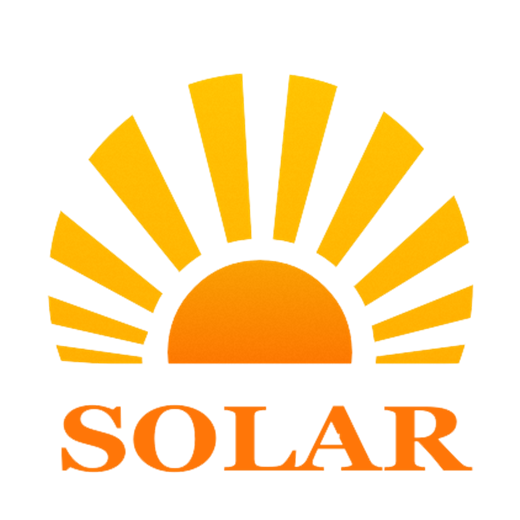As photovoltaic power generation is increasingly widely used, the advantages of photovoltaic power generation are highlighted, and many qualified owners have begun to choose it. However, due to the variety of installation conditions, how to install it is also the most concerned issue for customers. The photovoltaic system has a service life of up to 25 years, so from the early on-site survey, scheme design, construction, operation and maintenance, etc., we must consider it carefully to avoid some irreparable losses in the later stage!

1. Which installation form is used
The methods for installing photovoltaic modules on different roofs are also different. Common installation methods include additional type, ballast type and pile foundation type.
If the roof is a color steel tile type, the additional type is generally considered, and the components are directly laid flat on the color steel tile, especially since the general color steel tile roof has no parapet, and the flat type has the best windproof effect and is the safest; in addition, the color steel tile roof also has a certain inclination angle. Although it may not be the optimal inclination angle corresponding to photovoltaic power generation, the renovation cost brought by increasing the inclination angle also needs to be comprehensively considered.
For cement roofs, they are usually flat, and the common installation methods are ballast type and concrete foundation pile type, as shown in the figure.

Many times, building owners do not allow drilling on concrete flat roofs, partly because they are concerned about the strength of old buildings or do not want to change the waterproof performance of the roof. This is why ballasted or concrete foundation installation is chosen.
Since the ballasted type is not anchored to the roof, the side can be considered for wind protection, especially for cement roofs without parapets.
The main purpose of the concrete base is to ensure that the bracket system remains intact even in stormy seasons. It ensures a good installation without causing roof leaks, and can also improve the efficiency of solar panels and reduce the shielding of sunlight by parapets.
2. Flat roofs do not mean flat installation
It seems to be the most obvious way to install photovoltaic panels on flat roofs in a flat manner. Not only can the installation volume/area be maximized, but it is also possible to use photovoltaics as roof ceilings to increase the space area.
But in fact, installing PV on a flat roof does not mean that you should also set its inclination to 0 degrees. We need to consider many factors and avoid flat installation, including:
(1) Flat panels are prone to dust accumulation, which may cause a 10% or even 30% loss in power generation;
(2) It is more inconvenient to clean and the accumulated water is not easy to flow out;
(3) Compared with tilted installation, the power generation will be reduced;
(4) The return on investment period will be longer;
(5) It may not be possible to rely on natural rainfall to remove the dust;
The power generation of tilted installation and pure flat PV arrays will be significantly different. Through simulation of an 11.2kWp solar system, the inclination angles are 10 degrees, 5 degrees and 0 degrees respectively.
The simulation results show that if the inclination angle is 0 degrees, the annual power generation of the 11.2kWp system is about 13,480.3kWh, while at a 5-degree inclination angle, the system generates 14,066.9kWh a year. In fact, when the inclination angle is 10 degrees, the system generates 14,520kWh a year.
From the results, it can be seen that for every 5-degree increase, the system will increase its power generation by 500kWh per year (after 15 degrees, the increase will be significantly reduced, and it will be even lower after exceeding the optimal inclination angle). Moreover, the above simulation has not taken into account the power generation loss caused by dust accumulation during low-inclination installation.
If you are not willing to use the optimal inclination angle for installation, the installation inclination angle should be as high as possible. If it must be laid flat, it is recommended to design the inclination angle between 5-10 degrees. For flat roofs, an angle of 5-10 degrees is already flat enough, and for color steel tile roofs, an angle of more than 3 degrees is generally left. Compared with the additional cost of increasing the inclination angle, it is also a good choice to go with the flow and follow the slope.

3. Flat roof installation must consider wind speed
During the design phase of the solar energy system, the maximum wind speed that may occur locally must be considered, especially in areas where the wind speed exceeds 180 kilometers per hour.
It is not once in five years, once in ten years, the life of the photovoltaic system is 25 years, and once in 50 years must be considered!
The typhoon that occurred in Nantong, Jiangsu at the end of April 2021 is enough to explain everything. With the improvement of building quality, for the buildings in Nantong area, almost no one will consider the typhoon disasters that often occurred thirty years ago. After all, the typhoons in Nantong area can only have some impact on the square, thatched houses, and greenhouses in the past.
But the strong wind that occurred in Nantong blew the solar photovoltaic and solar water heaters on the roof to the ground, causing more than a dozen deaths during the typhoon. It is no exaggeration to say that it is once in 50 years.
Ordinary flat roof solar power generation systems can withstand wind speeds of 160 km/h (level 13 typhoon), but if there is no parapet to block the wind, and the array is not considered to be windproof, the instantaneous wind speed caused by airflow in the local area will far exceed the actual wind speed.
At this time, the selection of brackets, structural design, ballast or concrete foundation strength design must rely on the advice of professional organizations. Even the flat laying of color steel tile roofs must be scientifically analyzed.
4 Water leakage risk of flat roof installation
Water accumulation is common on flat roofs. Because the roof is flat, water has nowhere to go, or the drainage is slow, and the time it stays on the roof will be longer. Therefore, any gaps and holes on the roof will become a place for water accumulation.
At this time, the flat roof with the photovoltaic system installed has become the biggest risk of water leakage for flat roof photovoltaics due to the damage to the waterproof layer caused by the installation of brackets and concrete pile foundations.
If it is a color steel tile roof, it is better to use a clamp to install it than to punch holes in the color steel tile; if the color steel tile is not suitable for clamp connection, structural adhesive bonding is also an option.
5. Mechanical units on flat roofs need to be considered
One of the challenges of designing and installing photovoltaics on cement flat roofs is the various mechanical devices on the roof of existing buildings, such as outdoor air conditioning units, drain pipes, exhaust fans, ventilation facilities, water tanks, railings, roof structures, HVAC systems and water pipes, etc.
These existing devices not only affect the layout of rooftop photovoltaics, the spacing and arrangement of brackets, but may also cause shadows to the photovoltaic arrays or affect future operation and maintenance.
Some designers will consider installing photovoltaics above these facilities to protect the facilities from wind and rain, but another problem brought about by this is the height design requirements and wind protection requirements, as well as the difficulty of operation and maintenance.
For rooftop facilities, the design can only be carried out according to local conditions, but this is an issue that cannot be avoided and must be taken seriously for rooftop photovoltaics.

6. Additional issuance of roof tiled modules
Generally, there is no absolute 0-degree angle for tiled installation, but low inclination is indeed an issue that cannot be avoided, and even cement roofs have such a demand.
For roof tiled photovoltaics, the best power generation capacity can still be obtained after optimizing the design, which can be achieved in different ways.

